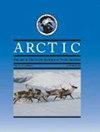An Examination of Outdoor Garden Bed Designs in a Subarctic Community
IF 0.8
4区 地球科学
Q4 ENVIRONMENTAL SCIENCES
引用次数: 0
Abstract
At the global level, interest is growing in extending agricultural activities northwards to increase future food production. Agricultural activities are emerging at the local level in the subarctic and Arctic regions in order to adapt to climate change, mitigate food insecurities, and build up food autonomy. This pilot crop management study was situated in the Hudson Bay Lowlands within an isolated, Indigenous community garden site surrounded by a mature shelterbelt. The study’s purpose was to compare kale growing in three types of low-cost garden bed treatments (four plots per treatment) under ambient conditions in a subarctic climate. The 2019 study measured aboveground biomass and total leaf surface area of kale, monitored soil climate conditions of each treatment, and deciphered, with regards to regional suitability, the benefits and drawbacks of each garden bed treatment. Kale cultivated in the standard boxes (0.25 m height raised bed) and hügelkultur-style boxes (0.50 m height raised bed, including a layer of buried woody debris) resulted in 44 – 58% more aboveground mass and 52% more total surface area than were yielded in kale cultivated in the ground treatment (not elevated), but these increases did not represent statistically significant differences among treatments (ANOVA, p ≥ 0.12) because of the large variation likely from a small sample size. The two raised box treatments increased early-season soil temperatures by 0.5˚C to 2.5˚C and reduced soil moisture by 41% – 53% compared to the ground treatment. We determined that the standard box treatment is best suited for the study site for improving soil climate conditions, protecting against water erosion, and decreasing the need to bend over.亚北极社区户外花园床设计研究
在全球一级,人们越来越有兴趣将农业活动向北扩展,以增加未来的粮食生产。为了适应气候变化、减轻粮食不安全状况和建立粮食自主权,亚北极和北极地区正在地方一级开展农业活动。这项试点作物管理研究位于哈德逊湾低地,在一个被成熟防护林包围的孤立的土著社区花园场地内。这项研究的目的是比较在亚北极气候的环境条件下,羽衣甘蓝在三种低成本花园床处理(每种处理四块)下的生长情况。2019年的研究测量了羽衣甘蓝的地上生物量和总叶表面积,监测了每种处理的土壤气候条件,并在区域适用性方面破译了每种园床处理的利弊。标准箱(0.25 m高的挑床)和h凝胶培养箱(0.50 m高的挑床,包括一层掩埋的木质碎片)中栽培的羽衣甘蓝比地面处理(不挑床)中栽培的羽衣甘蓝的地上质量增加了44 - 58%,总表面积增加了52%,但这些增加并不代表处理之间的统计学差异(方差分析,p≥0.12),因为小样本量可能存在较大差异。与地面处理相比,两种垄沟箱处理的季前土壤温度提高了0.5 ~ 2.5℃,土壤水分降低了41% ~ 53%。我们确定标准箱处理最适合研究地点,以改善土壤气候条件,防止水蚀,减少弯腰的需要。
本文章由计算机程序翻译,如有差异,请以英文原文为准。
求助全文
约1分钟内获得全文
求助全文
来源期刊

Arctic
地学-环境科学
CiteScore
2.30
自引率
0.00%
发文量
51
审稿时长
6-12 weeks
期刊介绍:
Arctic is a peer-reviewed, primary research journal that publishes the results of scientific research
from all areas of Arctic scholarship. Original scholarly papers in the physical, social, and biological
sciences, humanities, engineering, and technology are included, as are book reviews,
commentaries, letters to the editor, and profiles of significant people, places, or events of northern
interest
 求助内容:
求助内容: 应助结果提醒方式:
应助结果提醒方式:


